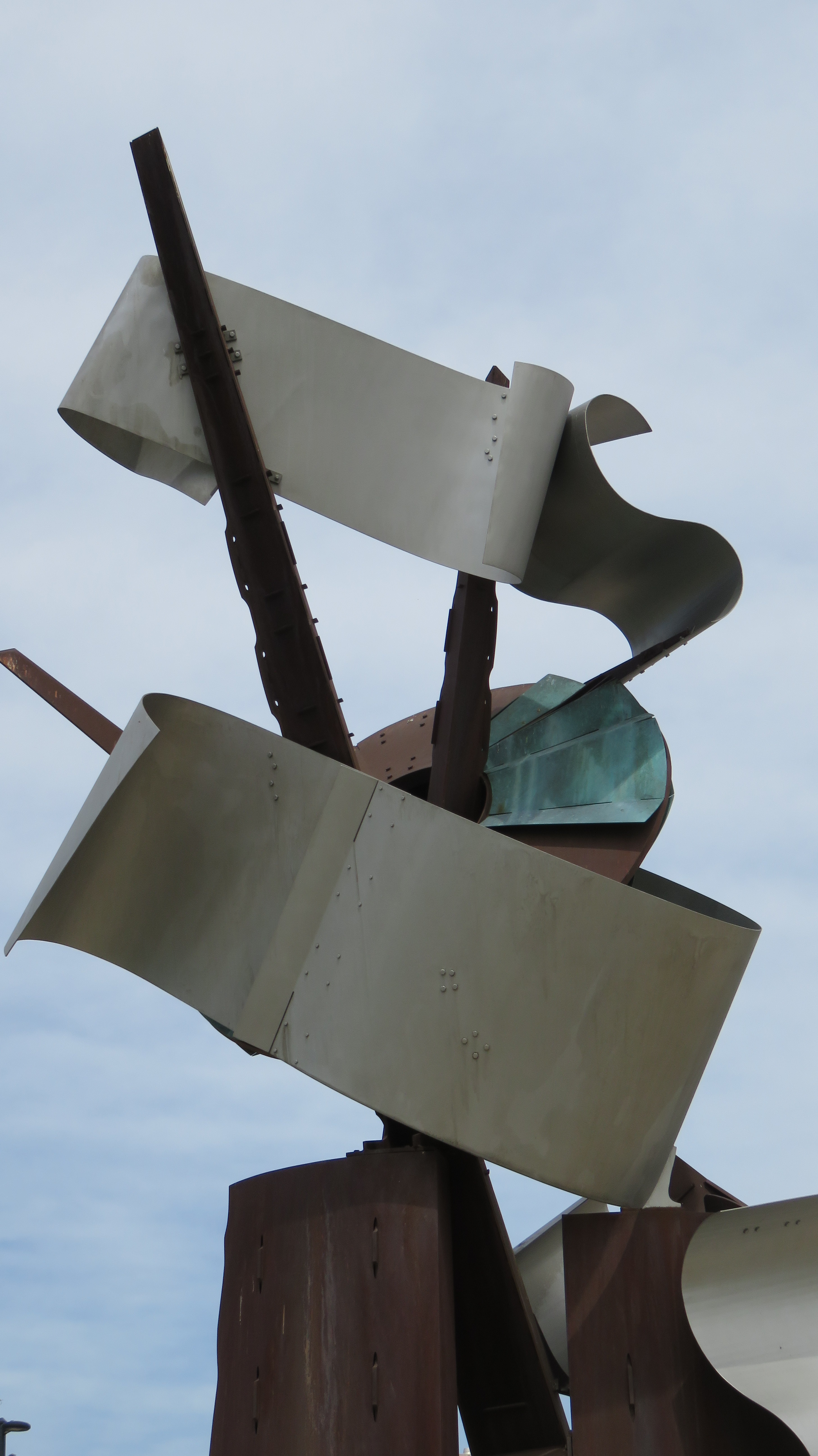
Southwest corner of Main and Waterman
I have always loved this sculpture. Especially at night. When I worked at the station I would drive down Main just to see it on my way home. I was talking to someone in my family that commented they drove by it and “didn’t get it.” I told them it was an abstract piece. They responded, “Ok, but what’s it supposed to be?” So there you go.



Wichitans seem to have a history of love/hate with their public arts. Some think it’s a waste of money, others think more should be done.
In December 2019, the city committed 2% of capital improvement projects to art. That’s about 10 to 12 million dollars to make Wichita look better. I’m all for public art. These are those little niceties we sometimes forget about as we move around the city. Honestly, when was the last time you really stopped and appreciated The Keeper of the Plains and the area around it? Like the Keeper, Paragon is even more daunting when you get close to it.


Paragon was constructed in 2003 by artist Albert Paley. At almost 40 feet tall it holds its own surrounded by the WaterWalk development. According to a KMUW story, “the sculpture is made of weathering steel, stainless steel, and bronze.”




The city’s original call was for “a work that would act as a gateway, be highly visible, encourage pedestrian traffic, be durable, and take into consideration water as a theme.”
The $350,000 American Modernist sculpture was installed in early October 2011. The installation was not without controversy. Three city council members opposed it.
Local artist Terry Corbett explained the artist won over the city when he told the Council, “Everything out here is horizontal, you need something vertical.” The sculpture’s American Indian colors are mixed with metal shapes meant to represent our roots as a city and our aviation history. The whole thing is a spire pointing to the open Kansas sky.
Albert Paley was born in 1944 in Philadelphia, Pennsylvania. He earned his Bachelor of Fine Arts in sculpting with a minor in metalsmithing in 1966, and Master of Fine Arts in goldsmithing.




He and his wife, Frances Lectzin started forging iron in her garage in the summer of 1969. In 1973, he was commissioned by the Smithsonian to design the entrance to the Renwick Gallery in Washington, D.C.
I reached out to Elizabeth Cameron, the Consulting Archivist at Paley Studios, to ask if they had anything on the Wichita piece. After looking in the files she turned up Mr. Paley’s original submission “to the city to create an integrated artwork as part of the WaterWalk project.”
“By the placement of the sculpture, a pedestrian arena would be developed to encourage interaction. Seating could be incorporated in the near vicinity to encourage a place of gathering and meeting. In addition to scale and proportion, which has previously been discussed, the work would engage elements that would respond specifically to the area. The majority of my work is non-literal. However, the stylized banner shapes obviously have reference to water elements. The interactions of these curvilinear planes would make reference to the river as well as other contextual elements. In doing so, the artwork allows the viewer to revisit or reinterpret ” -Albert Paley
Albert closed his primary fabrication studio in mid 2019. He lives in Rochester, New York with his wife, Frances.




Check out some of Wichita’s other public arts. I like to call it, How Great Our Art.
